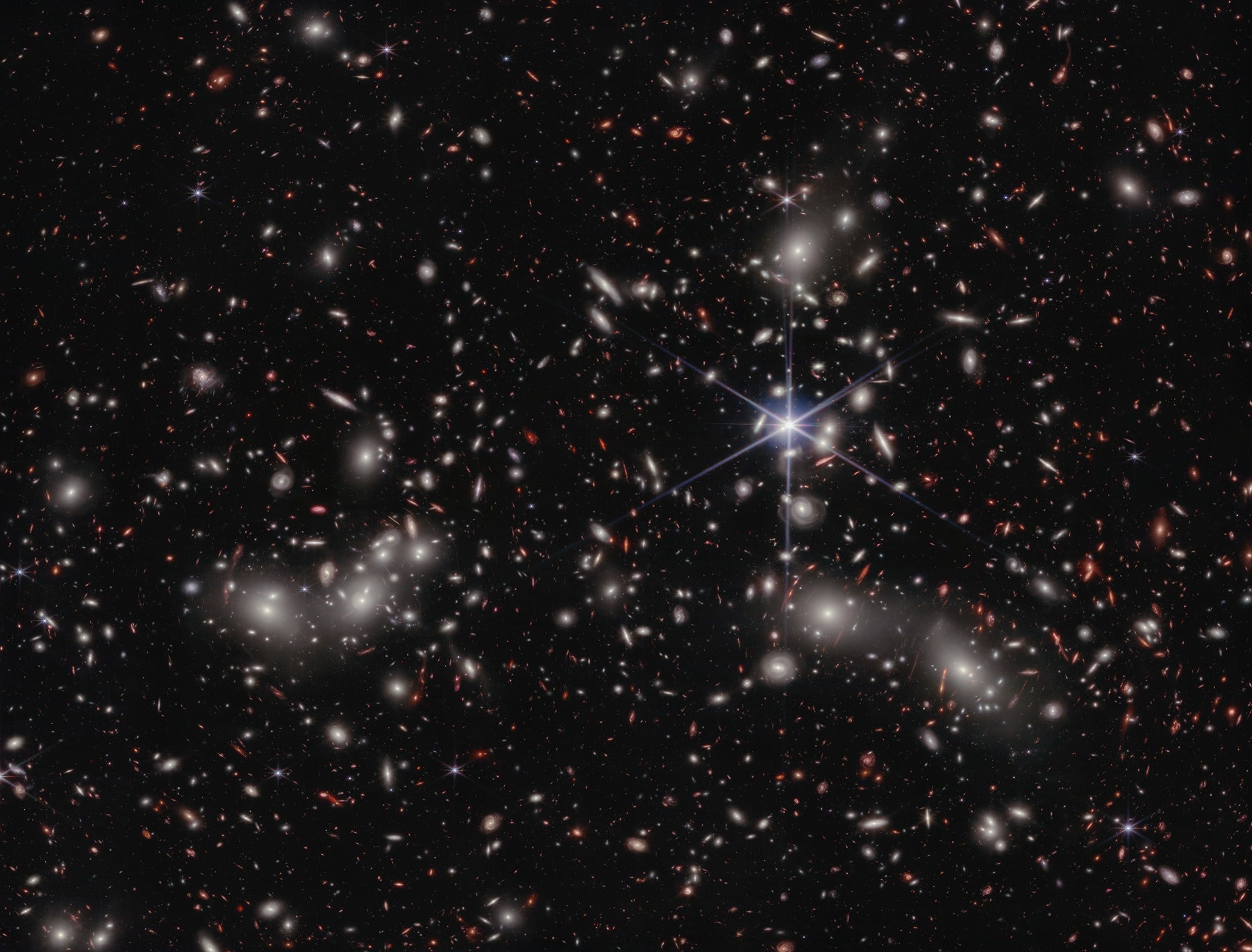
Astronomers have long been baffled by how our universe emerged from the “Dark Ages,” the critical epoch from about 400,000 years after the Big Bang until starlight pervaded the cosmos for the first time. This primordial cosmic fog prevailed until about 1 billion years after the Big Bang, but precisely how it lifted has been debated.
New observations with the James Webb Space Telescope (JWST) reveal abundant dwarf galaxies that took shape during the universe’s first few hundred million years were primarily responsible for pervading the universe with its first light. Thanks to their tiny sizes, radiation blasting from their very young, very hot stars easily escaped into the intergalactic medium, where it broke neutral hydrogen atoms and “charged them up” into ions of hydrogen.
While astronomers already knew that the earliest tiny galaxies were more abundant than their massive counterparts, it was unclear just how much radiation they were capable of pumping out into the universe, which determines their role in flooding it with light. The latest JWST observations, which measure escaping radiation from eight ultra faint galaxies from the early universe, found their ilk had four times more ionizing power than massive galaxies. This makes dwarf galaxies the primary drivers that pulled the universe out of the Dark Ages — even if just 5 percent of their ionizing radiation escaped past into intergalactic space.
“It is a very nice confirmation,” says Claudia Scarlata, an astrophysicist at the University of Minnesota Twin Cities, who was not involved with the new study.
The cosmic potential of dwarf galaxies
Although massive galaxies are more efficient at producing radiation than small galaxies, there were very few of them in the first hundred million years or so after the Big Bang, says Hakim Atek, an astrophysicist at the Institut d’Astrophysique de Paris in France, and the lead author of the new paper published Feb. 28 in Nature.
A handful of massive galaxies that did exist absorbed their own ultraviolet (UV) light, preventing it from escaping into the interstellar medium. On the other hand, there were 100 times more dwarf galaxies than massive ones at the time, meaning they “collectively emitted radiation enough to ionize the entire universe,” says Atek.
Yet the role of these tiny cosmic residents remained unclear for decades because astronomers could only observe the brightest galaxies, which were easier to spot. Even the Hubble Space Telescope, the most powerful telescope before JWST, did not have the infrared capabilities needed to hone in on the tiny, very distant galaxies.
The JWST gives astronomers unprecedented infrared observations, but when it comes to spectroscopic data required to quantify the galaxies’ intrinsic ionizing power, even the mighty telescope needed some “gravitational boost,” says Atek.
A boost from the universe
To study the eight ultra-faint galaxies, which were first identified in Hubble’s images and are considered the best-yet representation of the earliest galaxy population, Atek and his team studied a large cluster of galaxies about 4 billion light-years from Earth. Pandora’s Cluster (Abell 2744) in Sculptor is so massive that its gravity wraps, deflects, and distorts light passing through, behaving like a magnifying lens for objects behind it. As light from the targeted ultra faint galaxies passes through the cluster, it gets amplified, allowing astronomers to study its properties that are otherwise too faint for telescopes to resolve.
Based on well-established knowledge of the cluster’s mass, the team built computer models which approximated just how much the cluster amplifies the galaxies’ light. Then, the team worked back to what the galaxies’ true brightness would be, from which their ionizing power could be inferred, explains Atek.
“Lensing is the way to study the faintest objects,” says Scarlata. “I wish there were more studies like this.”
Many of these tiny galaxies that made their mark in the history of our universe are not to be found today. In the eons since cosmic reionization, many merged indistinguishably with one another to form bigger galaxies. A few others were quenched of their star formation precisely because of the radiation bombarded into the cosmos, which scorched their gas and dust reservoir and turned them into galactic fossils that still maintain their 13-billion-year-old tiny sizes. So the present-day universe is more or less an equal distribution of tiny and large galaxies because eventually “things evened out across the universe,” says Atek.
His team has already begun observing another group of earliest galaxies that existed during cosmic dawn, just a few hundred million years after the Big Bang. The fresh cohort is gravitationally lensed by a massive cluster named Abell S1063, about 4 billion light-years from Earth. To zoom in on these galaxies and their fleeting properties, researchers are pointing JWST at this cluster for a total of 120 hours, so we will be “really staring down at this cluster for a long time,” says Atek.









